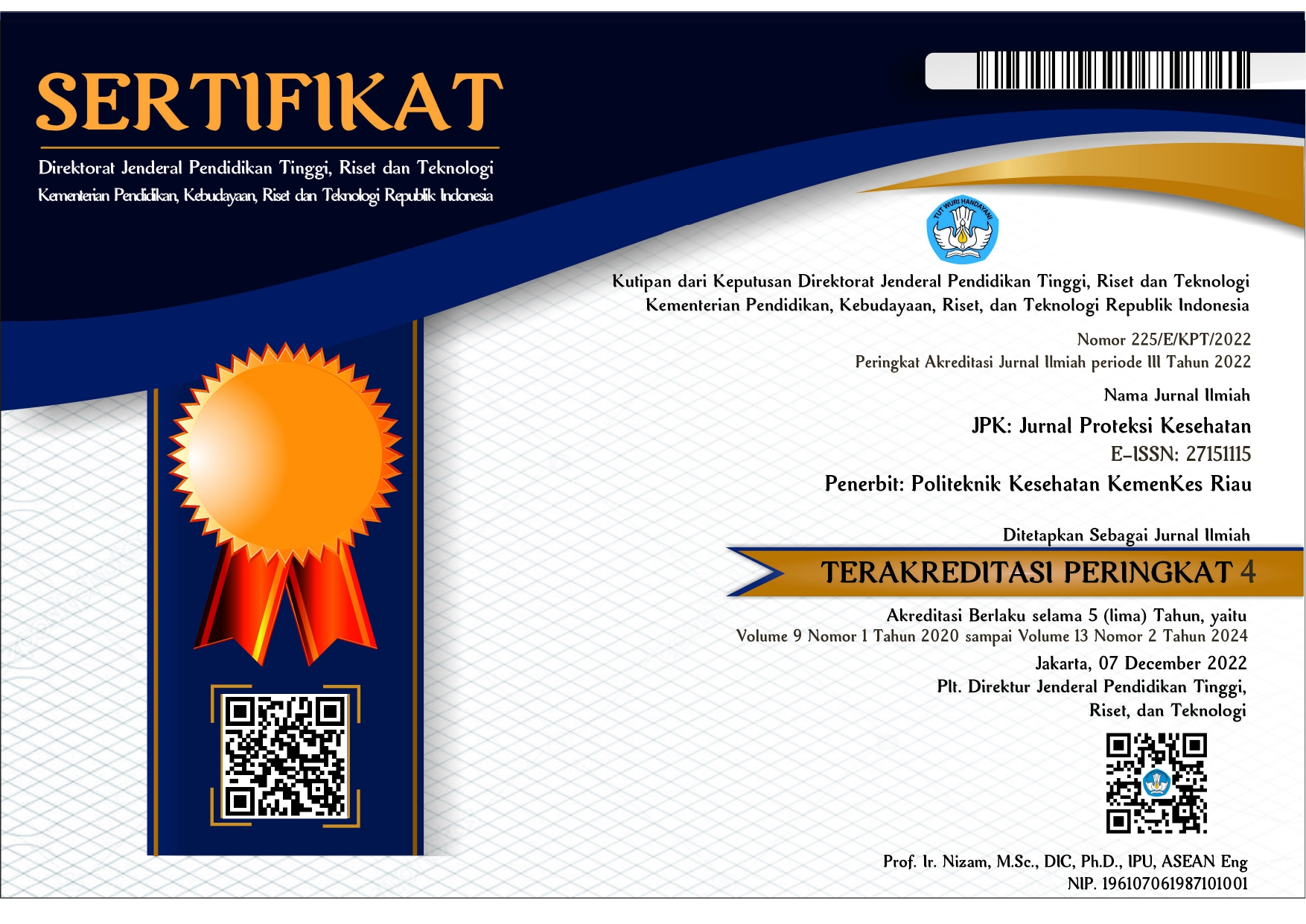The Antidiabetic Activity of Curcuma mangga Val. Rhizome Ethyl Acetate Fraction against Mice Induced by Alloxan
Abstract
The rhizome of the temu mangga is a member of the Zingiberaceae family that has been used since ancient times for treatment of diabetes. The aim of this study was to examine the activity of reducing blood glucose levels in diabetic mice induced by alloxan after administration of the ethyl acetate fraction of temu mangga rhizome at a dose of 100; 200 and 300 mg/KgBW were compared with negative control (Na CMC) and positive control (Glibenclamide 0.65 mg/Kg BW). The research data were statistically analyzed using two-way ANOVA for the parameters of the percentage decrease in blood glucose and the percentage change in body weight followed by the Tukey multiple range test. The results showed that the administration of the ethyl acetate fraction of the mangga rhizome at doses of 100, 200 and 300 mg/KgBW prevented weight loss in mice compared to negative controls (p<0.05). The decrease in blood glucose levels of mice that were given the ethyl acetate fraction of the temu mangga rhizome at doses of 100, 200 and 300 mg/KgBW showed a significant difference compared to the negative control, and the dose of 300 mg/KgBW showed an insignificant difference compared to the positive control. The activity of lowering blood glucose levels is thought to be influenced by the content of terpenoid compounds.
References
[2.] Greenstein, B., dan Diana, W, “At a Glance Sistem Endokrin”, Edisi Kedua, Erlangga, Jakarta, 2010.
[3.] Anonim, “Anonim Diabetes Atlas’. Ninth Edition, International Diabetes Federation, 2019.
[4.] D. A. Nugent, D. M. Smith, and H. B. Jones, “A Review of Islet of Langerhans Degeneration in Rodent Models of Type 2 Diabetes,” Toxicol. Pathol., vol. 36, no. 4, pp. 529–551, 2008, doi: 10.1177/0192623308318209.
[5.] M. Madihah, F. Alfina, and Y. Y. Gani, “BLOOD GLUCOSE LEVEL AND PANCREAS HISTOLOGICAL SECTION OF MICE ( Mus musculus L.) INDUCED BY ALLOXAN AFTER TREATMENT OF Curcuma mangga Val. RHIZOME EXTRACT,” J. Biol. Udayana, vol. 20, no. 2, p. 64, 2016, doi: 10.24843/jbiounud.2016.v20.i02.p04.
[6.] Tedjo. A., Dondin. S, Latifah. K.D, “Aktivitas kemoprevensi ekstrak temu mangga,” Makara, Kesehatan, vol. 9, no. 2, pp. 57–62, 2005.
[7.] R. Hendrikos, N. Marusin, and D. H. Tjong, “Efek Ekstrak Etanol Rimpang Temu Mangga Curcuma mangga {Val}. Terhadap Sel β Pankreas Mencit Putih Yang Diinduksi Aloksan Secara Histologis,” J. Biol. Univ. Andalas, vol. 3, no. September, pp. 317–323, 2014.
[8.] F. W Mandey, E. Handayani, W. Eka Nanda, and A. Noor, “Extraction, Fractionation, And Antioxidant Examination Of Polyfloral Honey Originated From Bone Prefecture South Sulawesi Province,” Indo. J. Chem. Res., vol. 7, no. 1, pp. 86–91, 2019, doi: 10.30598//ijcr.2020.7-fmd.
[9.] S. Lenzen, “The mechanisms of alloxan- and streptozotocin-induced diabetes,” Diabetologia, vol. 51, no. 2, pp. 216–226, 2008, doi: 10.1007/s00125-007-0886-7.
[10.] S. ES, “Skrining Fitokimia Ekstrak Etanol Daun Gatal (Laportea decumana (Roxb.) Wedd),” Pharmacy, vol. 11, no. 01, pp. 98–107, 2014.
[11.] R. K Murray, D. A Bender, P. J Kennely, V. W Rodwell, P. A, Weil, “Biokimia Harper” , Edisi 30, Penerbit Buku Kedokteran EG, Jakarta, 2017.
[12.] S. Yang, S. Wang, B. Yang, J. Zheng, Y. Cai, and Z. Yang, “Weight loss before a diagnosis of type 2 diabetes mellitus is a risk factor for diabetes complications,” Med. (United States), vol. 95, no. 49, p. e5618, 2016, doi: 10.1097/MD.0000000000005618.
[13.] P. E. Aba and I. U. Asuzu, “Mechanisms of actions of some bioactive anti-diabetic principles from phytochemicals of medicinal plants: A review,” Indian J. Nat. Prod. Resour., vol. 9, no. 2, pp. 85–96, 2018.
[14.] S. K. Panigrahy, R. Bhatt, and A. Kumar, “Targeting type II diabetes with plant terpenes: the new and promising antidiabetic therapeutics,” Biologia (Bratisl)., vol. 76, no. 1, pp. 241–254, 2021, doi: 10.2478/s11756-020-00575-y.
[15.] M. J. Tan et al., “Antidiabetic Activities of Triterpenoids Isolated from Bitter Melon Associated with Activation of the AMPK Pathway,” Chem. Biol., vol. 15, no. 3, pp. 263–273, 2008, doi: 10.1016/j.chembiol.2008.01.013












